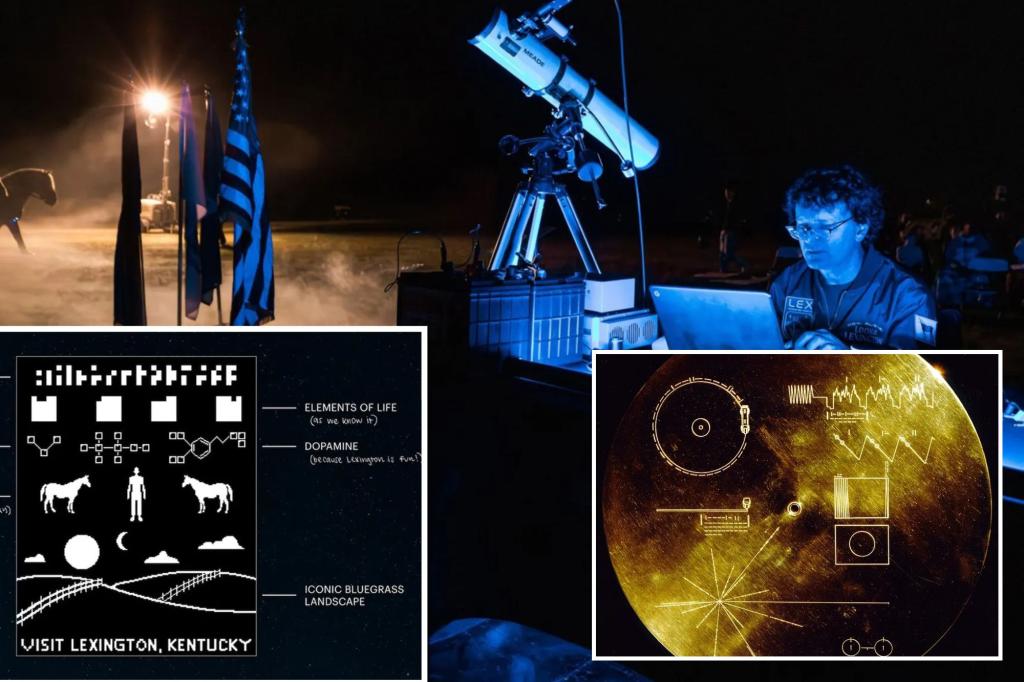A Kentucky town has come up with a unique way to boost tourism in the Blue Grass state — by extending an invitation to aliens who may live in a star system 40 light-years away.
Scientists in Lexington — along with the clever advertising team from VisitLex — sent a coded infrared laser message to TRAPPIST-1, a star with at least seven exoplanets believed to have the potential to host life.
At about 235 trillion miles from Lexington, and Earth, the message won’t reach its destination for 38 years, 262 days, 7 hours, 9 minutes and… 42 seconds, according to a countdown running on the VisitLex website at the time of writing, but scientists see that period as really in their favor.
“We’re targeting the TRAPPIST-1 system because we might actually have an answer in someone’s lifetime if there’s someone watching,” said Dr. Robert Lodder, a University of Kentucky professor of computer engineering who has extensive credentials in astrochemistry, astrobiology and the SETI (Search for Extra Terrestrial Life) program.
The message is a coded bitmap, or simple pixel plot image, that contains information about Earth. Visit LEX
Dubbed “the world’s first interstellar travel campaign” by VisitLex, the message attracted a group of Kentucky linguists, scientists – and even science fiction experts – to organize a transmission broadcast to a distant star.
The message is a coded bitmap, or simple pixel plot image, containing information about Earth including prime numbers, the periodic elements that are the building blocks for life in our corner of the universe, along with renderings of humans and horses.
Also included in the message are the molecular structures for Lexington’s favorite export — bourbon — and dopamine, too, “because Lexington is fun,” says VisitLex.
The team also threw in a pastoral scene of the Kentucky hills, a “Visit Lexington” message written in plain English, and a recording of Lexington blues master Tee Dee Young wailing on his electric guitar.
The message is sent via a coded infrared laser. Visit LEX
“Of all the things we have beamed into space, why not a positive and friendly message?” said University of Kentucky linguistics professor Dr. Brenna Byrd.
His messages and broadcasts have been approved by the Federal Aviation Administration, according to VisitLex.
While it may be the first time a travel flyer has been launched into space, the message is far from the first time humans have sent a transmission to alien life that might be listening out there in the cosmos.
The Voyager space probes launched in 1977 both contained identical golden phonograph records intended to give extraterrestrials an intelligence that might discover to them an idea of what life on Earth looks and sounds like.
Voyager’s Golden Record was intended to give aliens an idea of the sounds of life on Earth. NASA
They include music from around the world, recordings of different languages, sounds of nature, signals that can be translated into more than 100 images of life on Earth, a map showing the location of the sun relative to nearby celestial objects and some intended symbols. to help decipher the record.
Currently about 15 billion miles from Earth (about .006% of TRAPPIST’s journey), Voyager I has penetrated deeper into space than any other man-made object.
Another signal sent into space was the Arecibo message, broadcast from the Arecibo Telescope in Puerto Rico in 1974.
Like the message sent from Kentucky, the Arecibo message uses a pixel-based format to convey the human number system, symbols for local elements, representations of our DNA strands, maps of our solar system and renderings of human appearances, among other details.
The Arecibo message was broadcast from Puerto Rico in 1974. Arne Nordmann
The message is sent to the globular cluster Messier 13, about 25,000 light years from Earth, and will take years to reach.
Although well-intentioned efforts to contact civilizations on other worlds are possible, many scientists have warned that it should not be done.
Stephen Hawking, for one, famously advised it in a 2010 Discovery Channel documentary.
“If aliens visit us, the result will be the same as when Columbus landed in America, which turned out not to be good for Native Americans,” the physicist said.
Categories: Trending
Source: thtrangdai.edu.vn/en/



